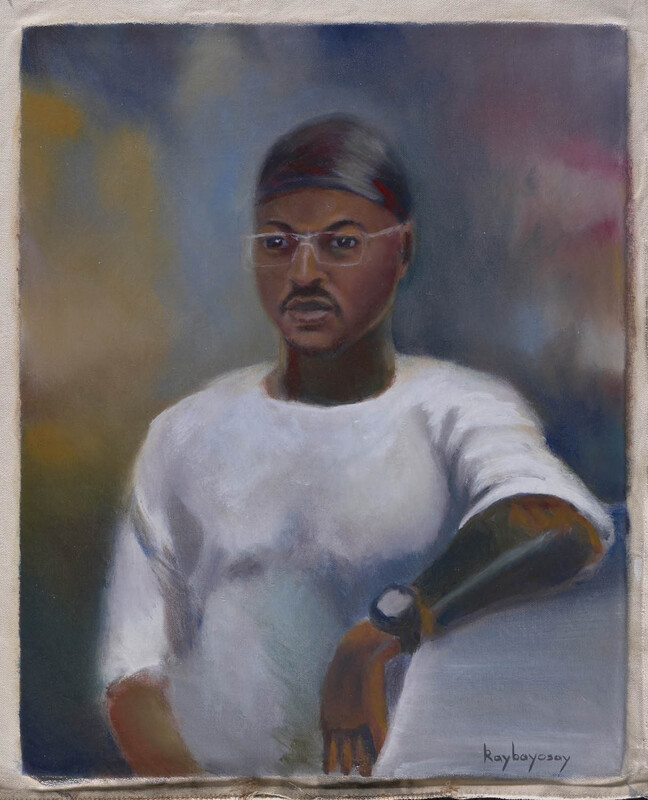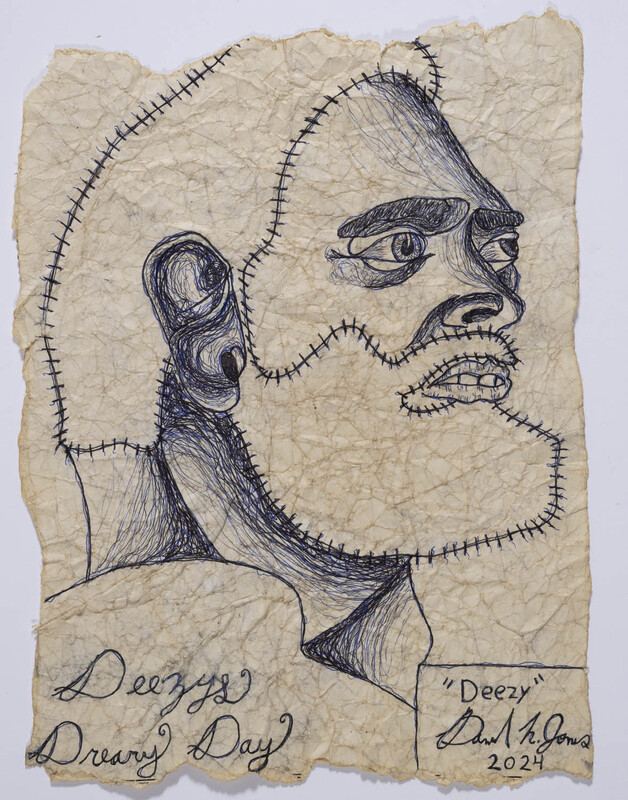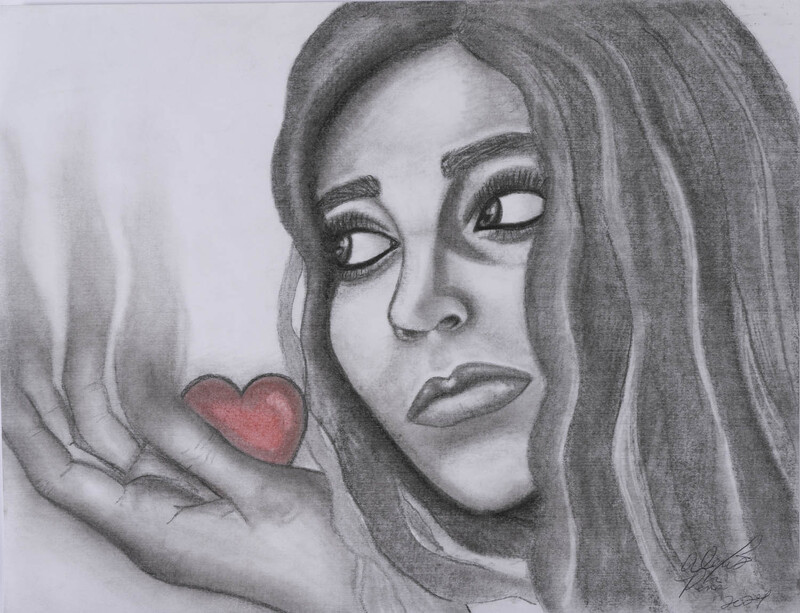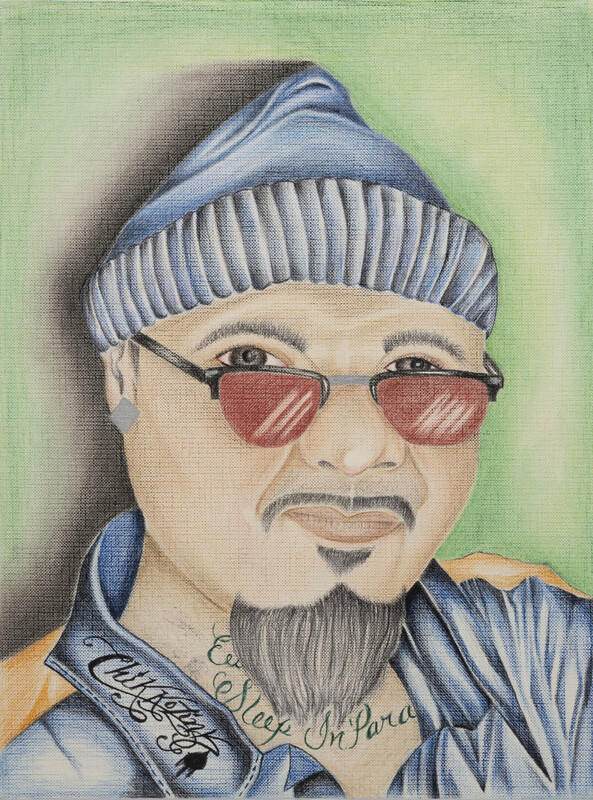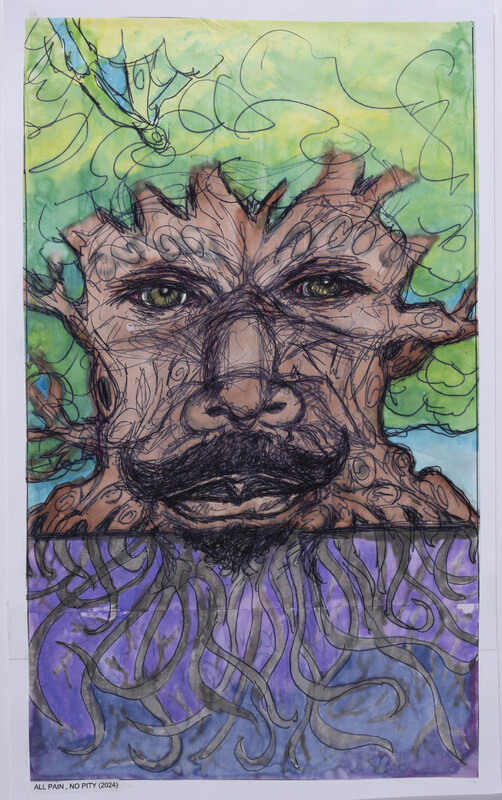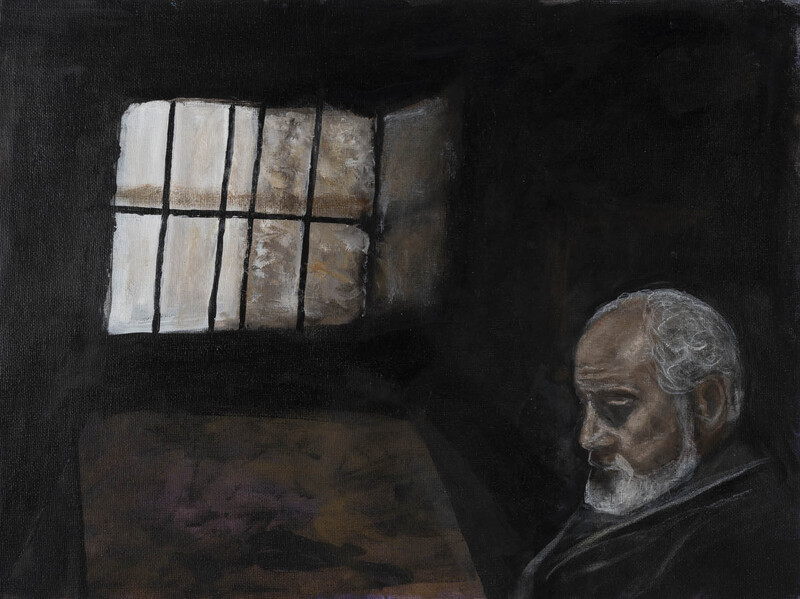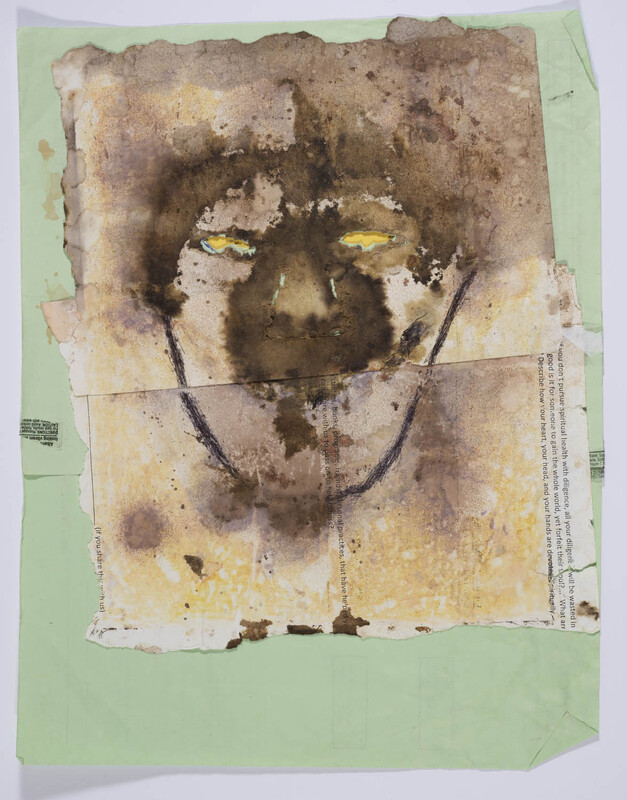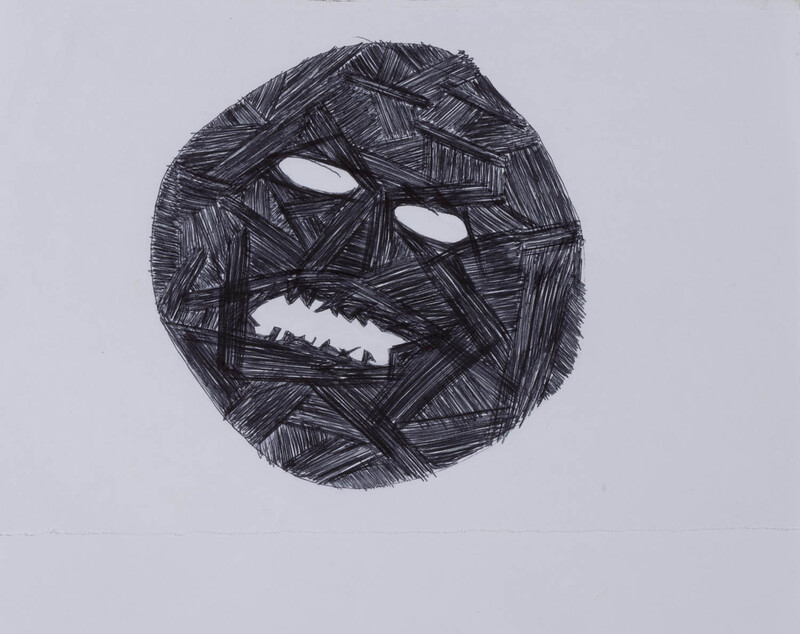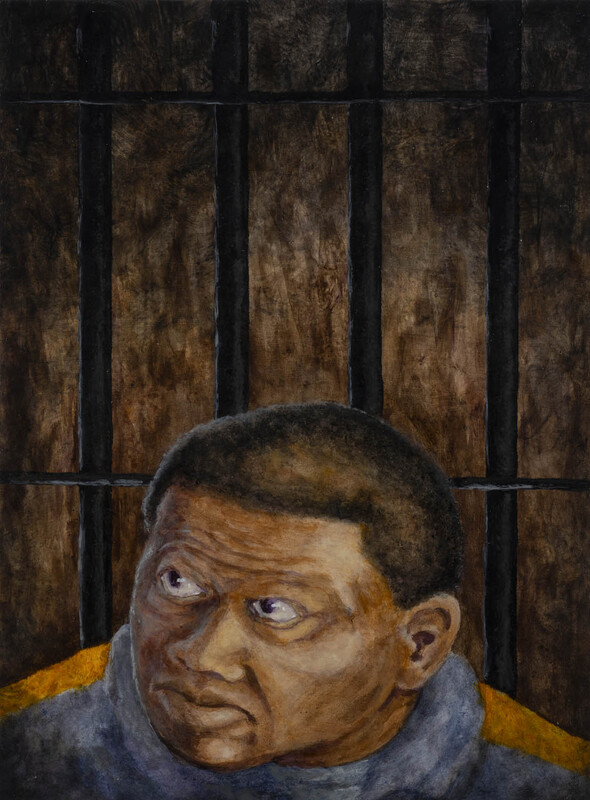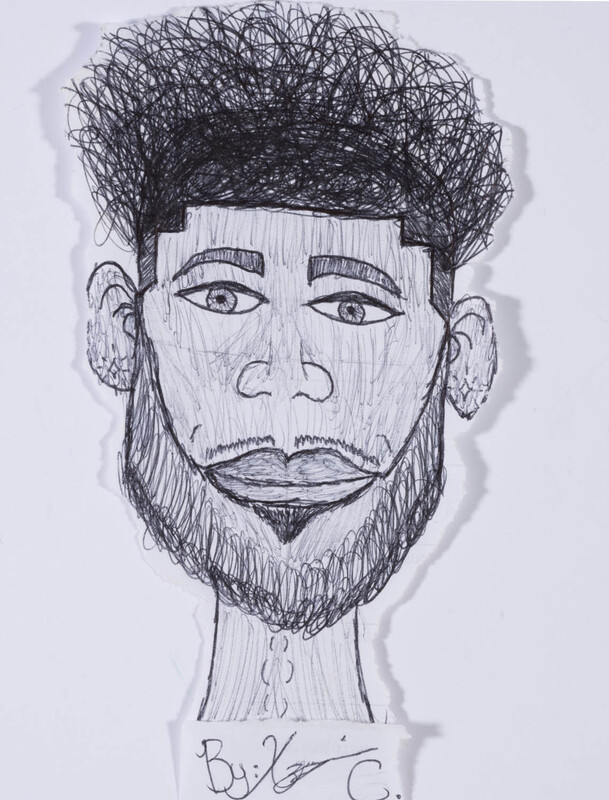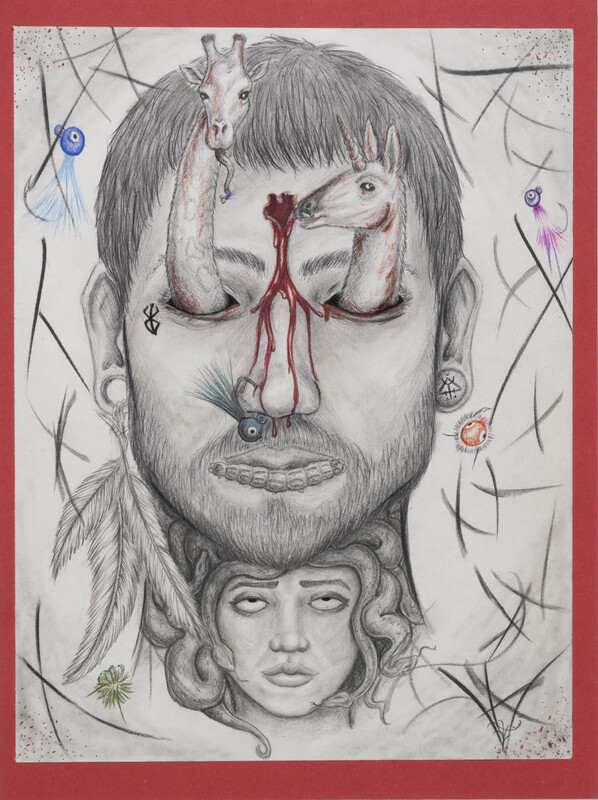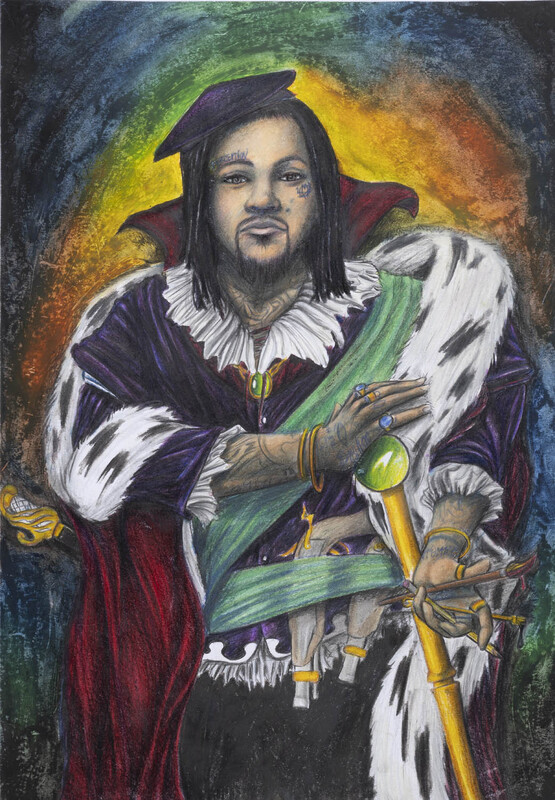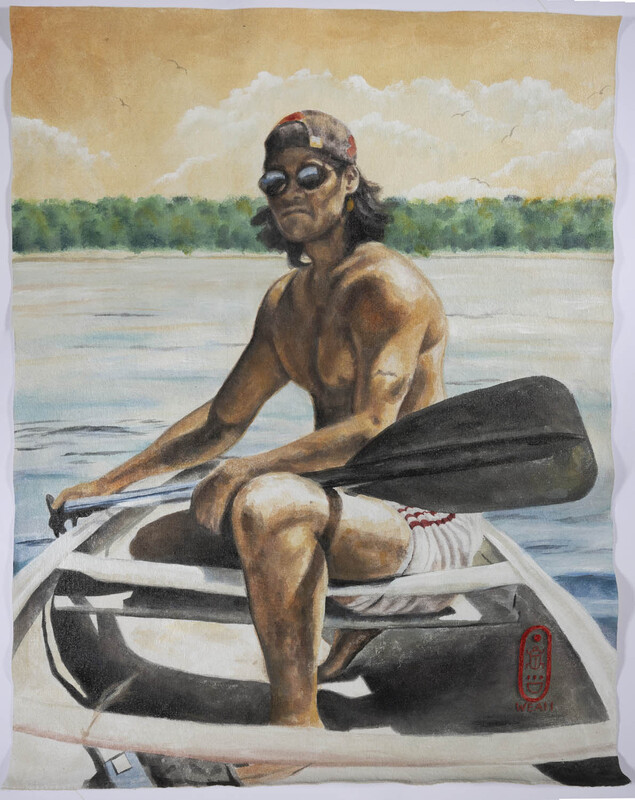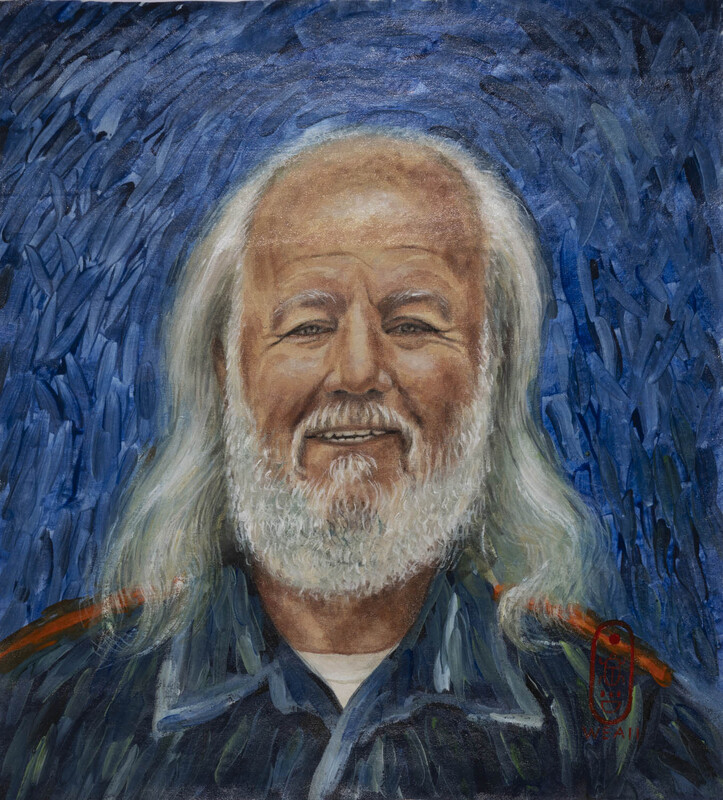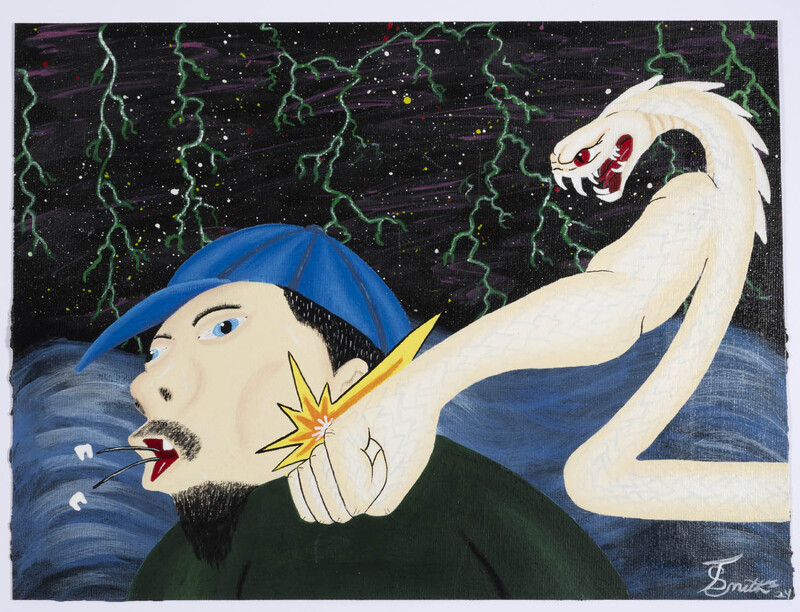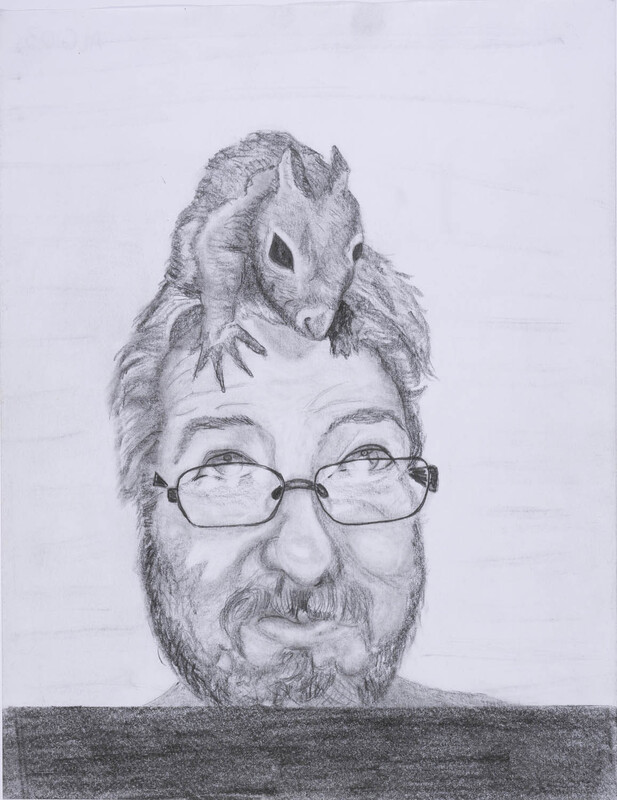Portraiture
Portraiture is one of the most common genres of art-making inside prison and often serves as an entrypoint for new artists. More than just an act of representing oneself or another, portraiture encapsulates the intimate relationship between an artist, their subject, and the world around them. It is an artistic genre with a long history across cultures. Portraits grapple with identity and a sense of self, with status and power relations, and with idealization and desire. Portraits figure cultural heroes, exemplary models, and notable celebrities; they represent relationality and interactivity between human subjects, and can reference a canon of artistic precedents.
From abstraction to realism, the works included in our ‘Portraiture’ section demonstrate the range of what a portrait can be. Portraits made inside prison are often commissioned by the incarcerated to commemorate loved ones, and are sent outside to family and friends. Self-portraits can present a redefinition of oneself through the lens of identity and personal experience. The scene in which the portrait subject resides can contribute emotion or mood to the characterization.
Critically, all of the portraits included in this section depict people who are currently incarcerated. They make visible people that the prison has attempted to erase; we the viewers are invited to see the sitter as a complex subject with a rich interior life and unique personal history. Two artists featured here are incarcerated in the same facility and painted one another. David Morales, in Portrait Painting From Life, depicts Willie Anderson, who modeled for him. Anderson, in turn, using a photograph, portrays a youthful Morales in a boat out on a lake in "Remembering Twenty:" K. Morales Portrait. Both paintings demonstrate valuable functions of portraiture: Anderson’s depiction of a memory and Morales’ representation of passing time. The artists also utilize portraiture in order to capture the friendship and humanity shared between them.
Existing in stark contrast to official photographic images of those inside, whether it be in mugshots, prison ID cards, or surveillance camera footage, portraiture can be a liberatory act of self-representation. It is an occasion when those who are incarcerated have the ability to represent themselves contrary to the stereotypical perceptions about people in prison. Our grouping of portraits challenges the viewer to grapple with how incarcerated people are perceived in an environment that constantly defines them by their past.
By: Maria D'Ambrosio, Olivia Glinski, and Iris Ruffing

